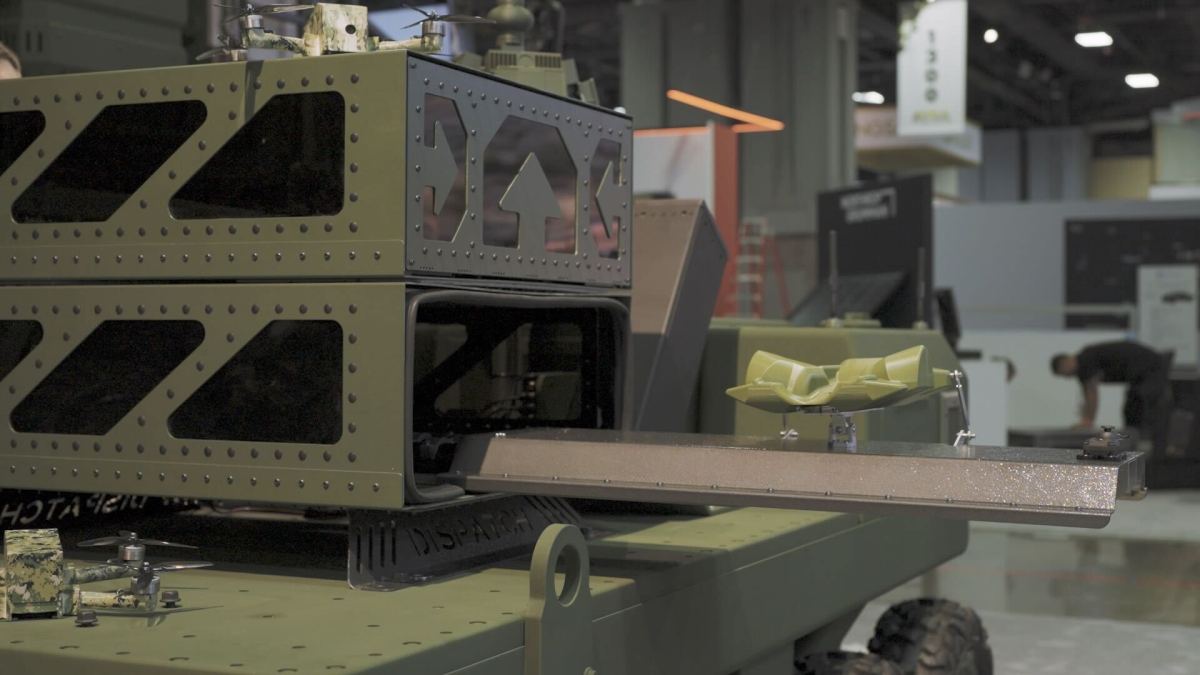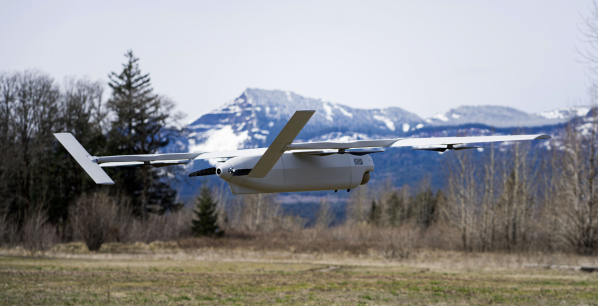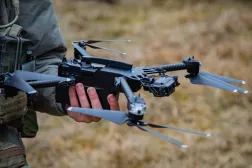Startup unveils mobile charging station to transform drone operations

Defense technology startup Valinor is looking to improve unmanned aerial system operations with its new networked docking station designed for the remote environments of future battlefields.
The company recently introduced Dispatch dock, a mobile charging station that can be integrated onto a range of military platforms and rapidly recharge different UAS. The system designed for the Pentagon’s push to embrace drones, and features capabilities that could ease the burden for warfighters, from autonomous launch and recovery to onboard compute storage.
“One of the things that makes it unique — and really what drove us into the space — is having a mobile platform for docking stations. There isn’t one that exists today in any form that is hardened [or] by any means ruggedized,” Nick Leak, general manager of the Dispatch business, told DefenseScoop. “If you think about taking something off-road in an austere environment in any sort of way, you might not be on a flat and level ground and you still need to be able to deploy a drone.”
Valinor is currently involved in a cooperative research and development agreement (CRADA) with the Army to continue developing the Dispatch dock. The company plans to demonstrate the system during the service’s upcoming Project Convergence event in 2026.
Leak added that Valinor is also working with other vendors — including drone manufacturers and vehicle prime contractors — on future collaborations.
“It’s a stepwise approach, but there are a couple of things that are tied together,” he said this week on the sidelines of the annual AUSA conference.
The Dispatch dock can be retrofitted on ground, maritime or fixed sites, and charge various types of drones, although the company’s first version is targeted towards short-range reconnaissance UAS like the Skydio X10D and the Teal Drone Black Widow — both of which are used by the Army. Leak said the station provides up to 1,000 watts of charging power, which is around three times as much as a standard Skydio X10D wall charger.
It features a self-leveling motion platform that acts like a gimbal so that drones can always take off and land on a flat surface, even if the platform that Dispatch is mounted on is operating off-road or at sea, he explained.
Because the Dispatch dock enables autonomous launch and recovery, warfighters don’t have to physically interact with the drone to hook it up to a charger or swap out a battery pack. Instead, they can remotely press a button or use voice commands to operate the system — a capability that could transform UAS operations when multiple Dispatch docks are deployed at once, Leak said.
“Now you have a drone that, if it’s got a 15-mile range that means it can go out seven miles and fly back seven miles,” he said. “But if you have another docking station that’s 14 or 15 miles out, now it can cover that whole stream and just land in another docking station.”
That concept — which Leak called “lily padding” — means that potentially, a drone could take off from a fixed site to conduct a mission, autonomously land at a dock to quickly charge, and then deploy once again to return to its original location or another site stationed even farther away.
The Dispatch dock also features a built-in communications infrastructure that enables more effective remote operations, he noted.
“If you think about an environment where there is [radio frequency] interference or there aren’t cell phone towers to be able to connect, they won’t be able to provide a data link while they’re in the air,” Leak said. “We have onboard compute so that you can connect to the drone once it docks and do a data dump — large amounts of data, very fast — at much higher rates that you have available in those areas.”






